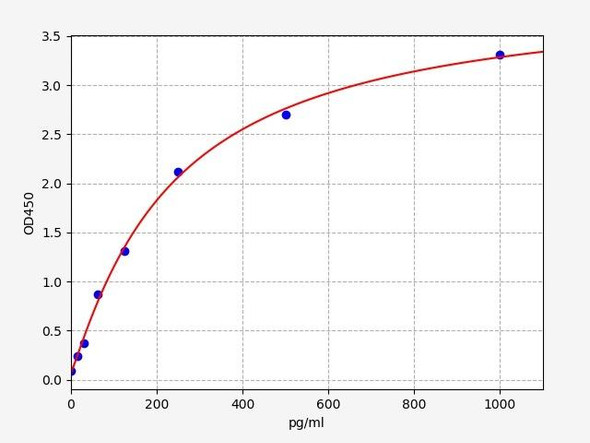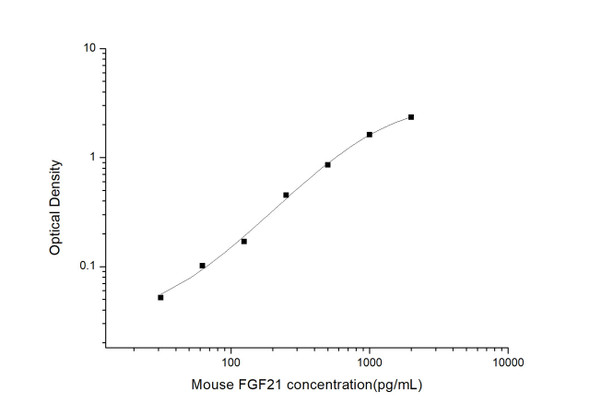Description
| Product Name: | Recombinant Mouse Fibroblast Growth Factor 21/FGF-21 (C-6His) |
| Product Code: | RPES6654 |
| Size: | 10µg |
| Species: | Mouse |
| Expression Host: | HEK293 Cells |
| Synonyms: | Fibroblast Growth Factor 21, FGF-21, FGF21 |
| Mol Mass: | 20.8 kDa |
| AP Mol Mass: | 20-25 kDa |
| Tag: | C-6His |
| Purity: | > 95 % as determined by reducing SDS-PAGE. |
| Endotoxin Level: | < 1.0 EU per μg of the protein as determined by the LAL method. |
| Bio Activity: | Testing in progress |
| Sequence: | Ala29-Ser210 |
| Accession: | Q9JJN1 |
| Storage: | Generally, lyophilized proteins are stable for up to 12 months when stored at -20 to -80°C. Reconstituted protein solution can be stored at 4-8°C for 2-7 days. Aliquots of reconstituted samples are stable at < -20°C for 3 months. |
| Shipping: | This product is provided as lyophilized powder which is shipped with ice packs. |
| Formulation: | Lyophilized from a 0.2 μm filtered solution of 20mM Tris-HCl, 100mM NaCl, pH 9.0. Normally 5 % - 8 % trehalose, mannitol and 0.01% Tween80 are added as protectants before lyophilization. Please refer to the specific buffer information in the print |
| Reconstitution: | Please refer to the printed manual for detailed information. |
| Background: | Fibroblast Growth Factor 21 (FGF21) is a growth factor that belongs to the FGF family. FGF family proteins play a central role during prenatal development and postnatal growth and regeneration of mamy tissues, by promoting cellular proliferation and differentiation. FGF21 is a potent activator of glucose uptake on adipocytes, protects animal from diet-induced obesity when overexpression in transgenic mice, and lower blood glucose and triglyceride levels when therapeutically adiministered to diabetic redents. FGF21 is produced by hepatocytes in reponse to free fatty acid stimulation of a PPARa/RXR dimeric complex. This situation occurs clinically during starvation, or following the ingestionof a highly-fat/low-carbohydrate diet.Upon FGF21 secretion, white adipose tissue is induced to release free fatty acids from triglyceride stores. Once free fatty acid reach hepatocytes, they are oxidized and reduced to acetyl-CoA. The acetyl-CoA is recombined into 4-carbon ketone bodies, release, and transported to peripheral tissue for TCA processing and energy generation. |






